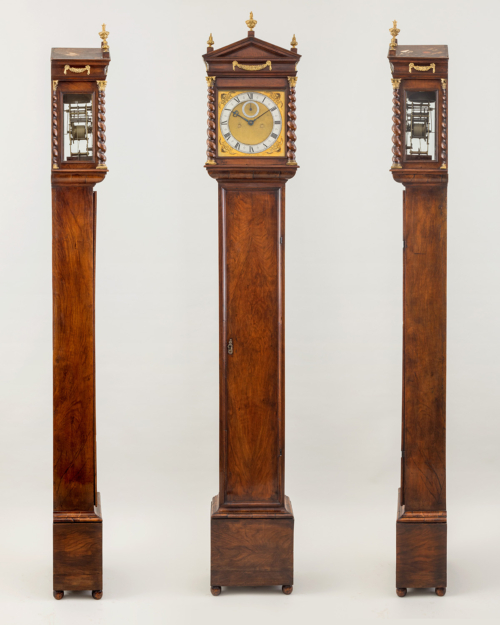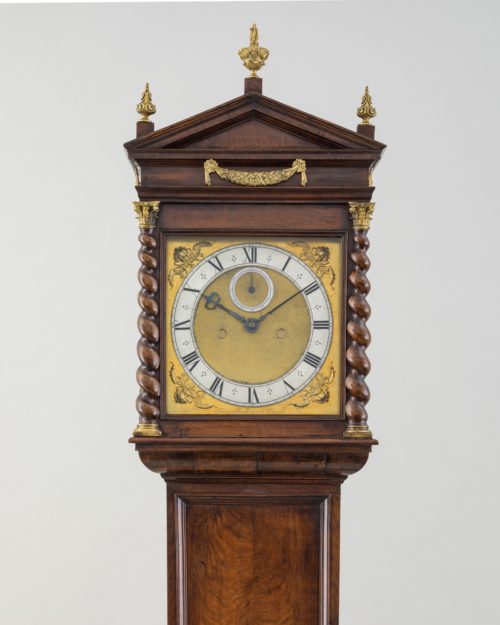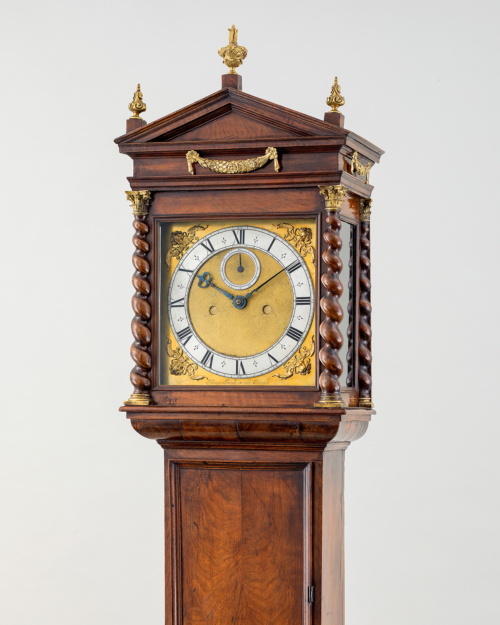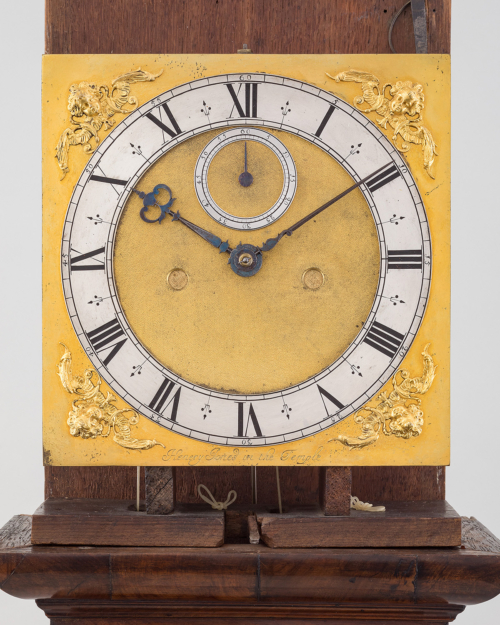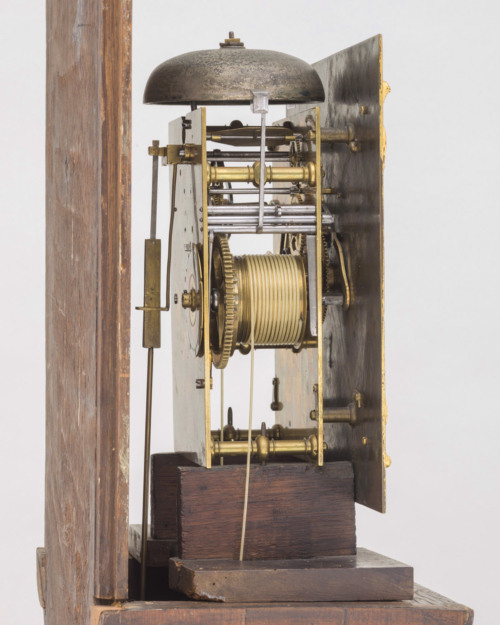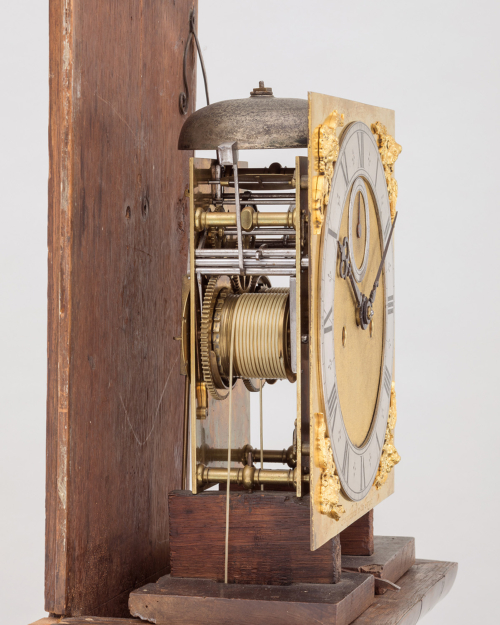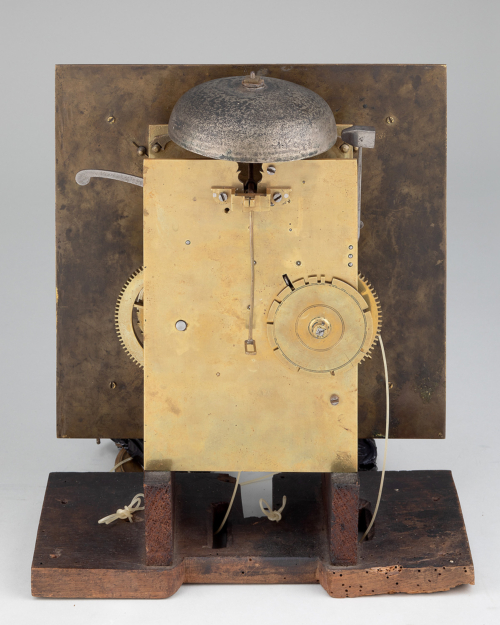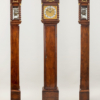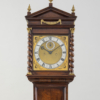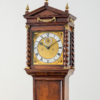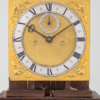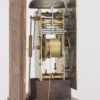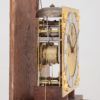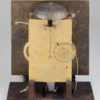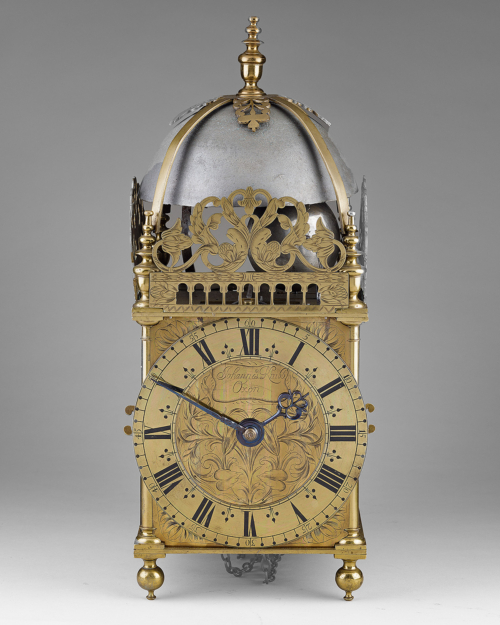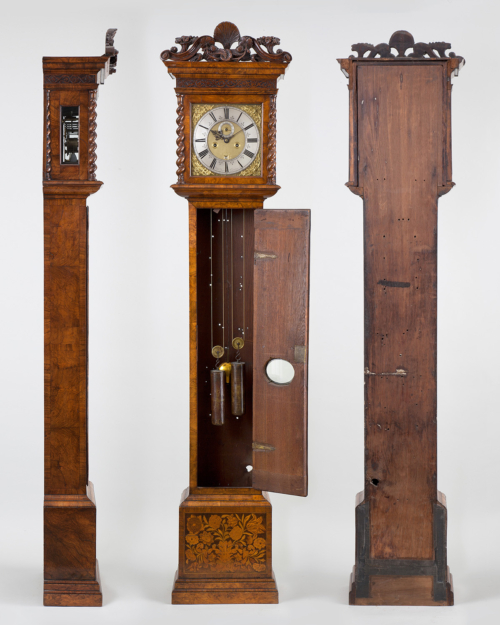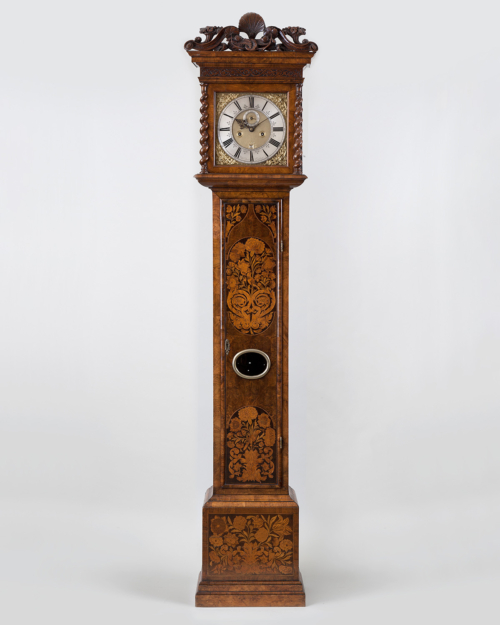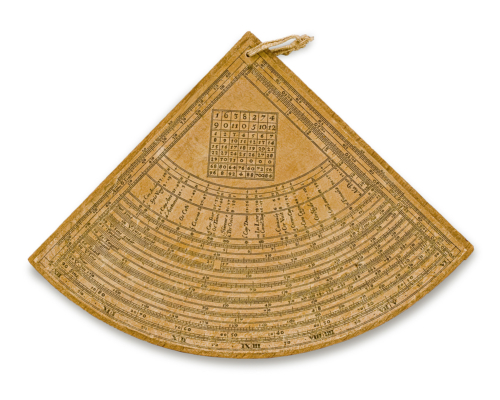| Height | 6 feet 10¾ inches (2107 mm) |
| Case | The beautifully proportioned architectural case is an early example using indigenous walnut veneers and mouldings. The rising hood with original catch and spring, surmounted by three gilt-brass finials on pedestals. With a gilt-brass swag mount to the frieze, above gilt-brass three-part assembled Corinthian capitals to the Solomonic columns, supported by a convex throat moulding above the long book-matched veneered trunk door mounted straight to the trunk sides, the conforming walnut veneered plinth raised on turned bun feet. |
| Dial | The 9½ inch square gilt-brass dial signed Henery Jones in the Temple to the lower edge, slender silvered chapter ring with trident half-hours and Arabic 5-minute numerals within the minute track, sculpted blued-steel hands, the matted centre with seconds ring and shuttered winding holes; winged cherub head spandrels to the corners, four latched dial feet. |
| Movement | The two-train movement with five latched finned baluster pillars, the going train has a conventional pivoted anchor escapement and pendulum crutch with bolt-and-shutter maintaining power, the strike train governed by an external countwheel, an early example of mounting direct to the barrel arbor on the backplate, and striking on the large bell above. Located onto the seatboard blocks with taper pins through the bottom pillars. |
| Duration | 8 days |
| Provenance | Probably acquired from the maker by the politician and landowner Sir Heneage Finch (1620-82) shortly before he was ennobled as Lord Finch in 1673; |
| Literature | The Antique Collector, Nov. 1947, Phillips of Hitchin advert; |
| Escapement | Anchor with one second pendulum |
| Strike Type | Outside hour countwheel mounted to the greatwheel arbor |
| Exhibited | 2004, Holland, Paleis Het Loo, Huygens’ Legacy, exhibit no.45; |
Exhibit № 16. The Finch Jones, Circa 1670-73
Sold but please get in touch for help in sourcing similar.
Sold
Heneage Finch was a barrister of the Inner Temple, near to Henry Jones. At the Restoration in 1660 he was MP for Canterbury and was soon after appointed Solicitor General. He became Attorney General in 1670, Lord Chancellor in 1675, and created Baron Finch in 1673 and Earl of Nottingham in 1681. At the time it was made, the clock was conceivably housed at Nottingham House, in Kensington, which was in 1689 bought from his heir, 2nd Earl of Nottingham, by William III and thence became Kensington Palace. The clock would then have subsequently been moved to Burley-on-the-Hill, Rutlandshire, the Finch family country house, where it is noted as having been housed before its appearance on the market in 1947.
Product Description
Heneage Finch was a barrister of the Inner Temple, near to Henry Jones. At the Restoration in 1660 he was MP for Canterbury and was soon after appointed Solicitor General. He became Attorney General in 1670, Lord Chancellor in 1675, and created Baron Finch in 1673 and Earl of Nottingham in 1681. At the time it was made, the clock was conceivably housed at Nottingham House, in Kensington, which was in 1689 bought from his heir, 2nd Earl of Nottingham, by William III and thence became Kensington Palace. The clock would then have subsequently been moved to Burley-on-the-Hill, Rutlandshire, the Finch family country house, where it is noted as having been housed before its appearance on the market in 1947.
Additional information
| Dimensions | 5827373 cm |
|---|

